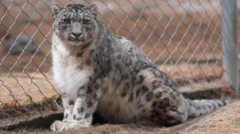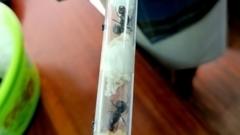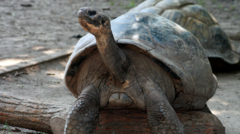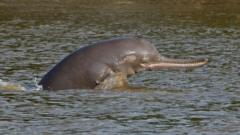Conservation efforts lead to the release of over 1,300 critically endangered snails back into their natural habitat on Bugio Island, highlighting the importance of preserving vulnerable species and restoring ecosystems.
Endangered Snails Make a Comeback as 1,329 Born in Captivity Are Released to the Wild
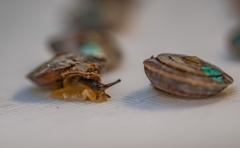
Endangered Snails Make a Comeback as 1,329 Born in Captivity Are Released to the Wild
Conservationists breathe life back into two species of critically endangered land snails on Bugio Island, following remarkable breeding efforts at Chester Zoo.
More than 1,300 tiny, critically endangered land snails, measuring only a few pea-sized millimeters, have been released into a remote Atlantic island, marking a significant milestone in conservation efforts. The initiative aims to reintroduce two species of Desertas Island land snails, previously thought to be extinct after not being spotted for a century.
In a remarkable discovery, conservationists identified a small population of these snails on the rocky cliffs of Deserta Grande island, located near Madeira. Following this breakthrough, they organized a rescue operation that brought the surviving snails to various zoos in the UK and France, including Chester Zoo, where sophisticated habitats were established for the tiny creatures.
The snails are native to the rugged landscape of Deserta Grande that has suffered significant habitat loss due to the introduction of rats, mice, and goats—predators that endangered the species. Between 2012 and 2017, conservation endeavors revealed that a mere 200 individuals remained, prompting immediate action to collect and breed them in captivity.
At Chester Zoo, the conservation science team carefully recreated the necessary environmental conditions, and after successfully breeding 1,329 baby snails, they marked each one with non-toxic colored dots for identification. Dinarte Teixeira, a conservation biologist at Madeira's Institute for Nature Conservation and Forests, explained that this "colour code" will help track how well the snails acclimate to their new surroundings.
These meticulously bred snails have now been transported to Bugio, a smaller neighboring island in the Ilhas Desertas archipelago, which has been recognized as a nature reserve with existing invasive species eradicated. Gerardo Garcia from Chester Zoo emphasized that the snails' reintroduction is a critical step toward recovering their populations. "If it goes as well as we hope, more snails will follow them next spring. It's a huge team effort, showcasing that turning the tide for critically endangered species is possible," he remarked.
Highlighting the ecological significance of these snails, Heather Prince from Chester Zoo stressed their role in the ecosystem, noting that they help decompose organic matter and enrich the soil, essential for plant growth. The restoration efforts signify a hopeful future for these overlooked species, aiming to sustain and revive their natural habitats.













